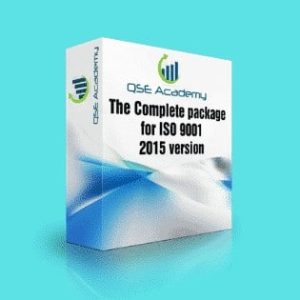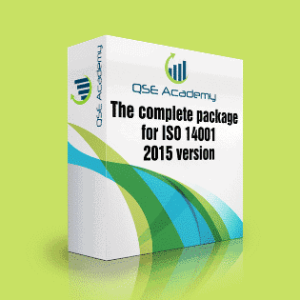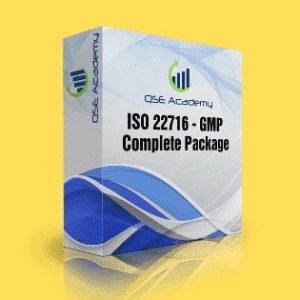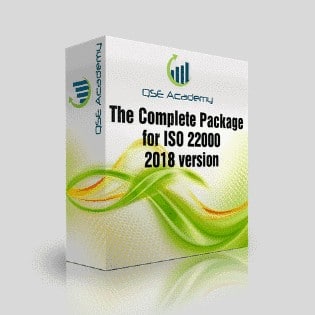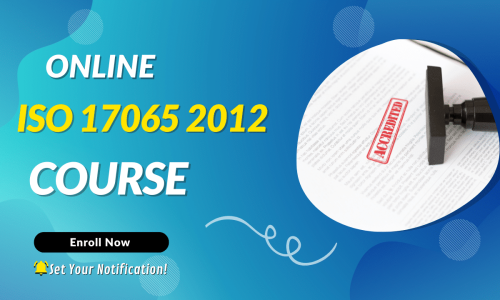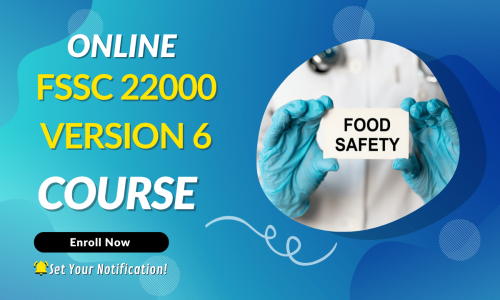What is FSSC 22000 Version 6? A Comprehensive Guide
Last Updated on October 13, 2025 by Hafsa J.
What is FSSC 22000 Version 6? A Comprehensive Guide
Let’s be real—food safety standards can feel overwhelming. There are acronyms flying everywhere, constant updates, and the pressure to keep up just keeps growing. I’ve worked with food manufacturers and processors for over a decade, and if there’s one thing I’ve learned, it’s this: most teams don’t struggle with doing food safety—they struggle with proving it.
That’s where FSSC 22000 Version 6 comes in. It’s not just another revision—it’s a significant update that’s already changing how companies manage compliance, audits, and risk in real-world operations. I’ve personally guided clients through this version transition, and I’ve seen firsthand where the roadblocks show up—and how to get past them without losing your sanity (or your certification).
So, if you’re wondering:
-
What exactly is FSSC 22000 Version 6?
-
What’s changed from the last version?
-
And how can you stay ahead of the curve instead of playing catch-up?
…you’re in the right place.
In this guide, I’m breaking it all down—no fluff, no jargon storms. Just practical insights, lessons from the field, and exactly what you need to align your food safety system with the new standard. Whether you’re in charge of certification, compliance, or operations, I’ve got you covered.
Let’s dive in.
What is FSSC 22000 Version 6? Let’s Break It Down
If you’ve ever looked at food safety standards and thought, “Wait—is this just ISO 22000 with a new label?”—you’re not alone. I’ve had that exact question come up in client calls more times than I can count.
So, what is it really?
FSSC 22000 Version 6 is a globally recognized food safety certification scheme. It’s built on three core components:
-
ISO 22000:2018 – This forms the backbone of your food safety management system.
-
Prerequisite Programs (PRPs) – These are sector-specific hygiene and operational conditions, such as ISO/TS 22002-1 for food manufacturing.
-
FSSC Additional Requirements – These go beyond ISO and PRPs, covering areas like food safety culture, equipment management, and product labeling.
Who’s it for?
FSSC 22000 Version 6 applies to a wide range of sectors across the food supply chain:
-
Food and beverage manufacturers
-
Packaging material producers
-
Animal feed and pet food facilities
-
Storage, transport, and distribution centers
-
Catering and retail food service
-
Traders and brokers
If your operation interacts with food in any way, there’s a good chance FSSC 22000 is either required—or soon will be.
Why choose FSSC 22000 over other standards?
Here’s the simple answer: market access and global credibility. FSSC 22000 is recognized by the Global Food Safety Initiative (GFSI), which means large buyers and international markets accept it as proof of robust food safety. ISO 22000 alone won’t always get you through the door, but FSSC 22000 will.
Pro Tip
If your customer or retailer asks for a “GFSI benchmarked certification,” FSSC 22000 checks that box. It’s especially useful for businesses already familiar with ISO 22000—it builds on what you know, without reinventing the wheel.
Key Changes Introduced in FSSC 22000 Version 6
Here’s what I’ve noticed working with clients during the transition—Version 6 isn’t just a minor update. It adds real weight to some areas that were previously skimmed over or handled loosely. If you’re still operating under Version 5.1, these updates are going to require some honest system checks.
Let’s walk through the big changes that matter most.
1. Food Safety Culture is No Longer Optional
In Version 6, food safety culture isn’t just a buzzword—it’s a requirement. You need to show how leadership supports it, how it’s communicated across the company, and how it’s being measured.
What this means in practice:
You can’t just run a training and tick a box. Auditors now look for real examples—things like employee engagement in safety meetings, visible leadership involvement, and actual behavior changes on the floor.
In my experience:
One food packaging client implemented monthly “culture check-ins” led by supervisors, and it helped them pass their audit with flying colors. Simple, practical actions go a long way here.
2. Equipment Management is Now Under the Microscope
New requirements expect you to have better control over equipment design, maintenance, and hygiene. This includes evaluating hygienic design before purchasing and during usage.
Why this matters:
Poorly designed or unmaintained equipment can become a contamination risk. Version 6 pushes businesses to address that risk proactively—not after an issue happens.
3. Audit Durations Just Got Longer
FSSC has recalculated audit times for most scopes. Expect longer on-site audits, especially for complex operations.
Heads-up:
You’ll need to plan for more time off the floor, better internal coordination, and increased cost. But don’t panic—longer audits can actually uncover more improvement areas that help your operations long term.
4. Integration of New GFSI Requirements
FSSC Version 6 incorporates GFSI’s latest benchmarking requirements, including topics like food loss and waste.
Translation:
You’ll now need to track and manage food loss as part of your environmental and sustainability responsibility.
5. Stronger Focus on Validation and Control of PRPs
Expect more detailed scrutiny around your prerequisite programs. Auditors will ask how you validate cleaning, pest control, allergen handling, and other PRPs—not just whether you do them.
One example from the field:
A dairy processor we worked with had to revamp their allergen swab validation process after a nonconformity flagged weak data tracking. Once fixed, they had a stronger, audit-ready system—and fewer cross-contamination concerns.
Pro Tip
Don’t assume your Version 5.1 documentation will automatically meet Version 6. Auditors will look for clear alignment with the new clauses—especially around culture, sustainability, and equipment. A simple gap analysis can save you time and surprises.
Why FSSC 22000 Certification Still Matters in 2025 and Beyond
Let’s be honest—there’s no shortage of food safety standards out there. Between ISO 22000, BRCGS, SQF, and others, it can be tough to figure out which one is worth the time, money, and effort. So why are so many companies sticking with or switching to FSSC 22000?
Here’s what I’ve seen firsthand after working with food businesses across manufacturing, packaging, and retail: FSSC 22000 strikes a smart balance between credibility, flexibility, and global acceptance.
It’s GFSI-Recognized—and That Opens Doors
This one’s big. FSSC 22000 is fully benchmarked by the Global Food Safety Initiative (GFSI), which means global retailers, importers, and large-scale customers trust it. In many cases, you won’t even get on a supplier list without it.
Real story:
One of our bakery clients landed a major contract with a European grocery chain—only because they had FSSC 22000 on their certification wall. No other changes, just the certification gave them that credibility boost.
It’s Built on ISO 22000—But Goes Further
If you’re already familiar with ISO 22000, FSSC 22000 is a logical next step. It takes the strong risk-based approach of ISO and layers on practical, operational requirements like PRPs and food defense. This combo gives auditors and buyers more confidence in your system.
In my experience, it also makes internal audits easier—because the structure is clean, familiar, and process-focused.
It Drives Real Improvements, Not Just Paper Compliance
Here’s something clients often tell me after certification:
“We didn’t just get a certificate—we actually fixed things.”
And they’re right. FSSC 22000 forces you to examine your systems in detail, plug gaps, and create sustainable habits across teams. It’s not just about looking good for the audit. It’s about building something that lasts and actually reduces risk.
Pro Tip
If you’re dealing with buyers across multiple regions—especially in Europe or Asia—FSSC 22000 often gives you more leverage than some regional-specific schemes. It’s well-known, well-respected, and seen as future-ready.
How to Implement FSSC 22000 Version 6 in Your Facility
I’ve seen a lot of companies make this harder than it needs to be. They overthink the documentation, rush through the training, or wait until audit time to fix gaps. Let’s not do that. If you want a smooth rollout of Version 6, you need a plan—and it doesn’t have to be complicated.
Here’s how I walk my clients through it step by step.
Step 1: Start with a Gap Assessment
Before you do anything else, compare your current system against the new Version 6 requirements. This includes ISO 22000, your sector-specific PRPs, and all the new FSSC add-ons.
Look especially closely at:
-
Food safety culture integration
-
Equipment and infrastructure requirements
-
Documentation updates
-
Any operational or labeling changes
In my experience:
A solid gap assessment saves weeks down the road. One frozen foods client used a checklist template I provided and identified ten issues they would’ve otherwise missed before their audit.
Step 2: Update Your Documentation
Now that you know where the gaps are, it’s time to update your manuals, procedures, and records. Keep it clear and aligned with what the auditors will expect. Don’t create documents for the sake of paperwork—focus on usability.
Key updates usually include:
-
Food safety culture policy and objectives
-
Equipment maintenance and design SOPs
-
Validation methods for PRPs
-
Food loss and waste tracking procedures
Step 3: Train Your Team—Really Train Them
Don’t stop at top-level awareness. Your internal team—especially supervisors and line staff—need to understand how Version 6 changes their day-to-day. If they don’t see the “why,” you’ll struggle to get buy-in.
What works well:
Short training modules by department. Don’t try to train everyone on everything. Tailor it to their role.
Step 4: Run Internal Audits with Version 6 in Mind
Don’t wait until your certification audit to test the changes. Schedule internal audits that mimic the real thing. This helps build confidence and gives you time to fix issues before they’re flagged formally.
Step 5: Schedule Your Transition Audit
Once you’re confident, book your transition audit with your certification body. Keep in mind, Version 6 audits take longer, so plan accordingly.
Tip from the field:
If you’re mid-cycle on Version 5.1, most CBs allow you to switch to Version 6 during your surveillance audit—but double-check their policy and timelines.
Pro Tip
Create a Version 6 Transition Folder with updated documents, training records, and change justifications. Auditors love when they can see everything clearly—and it shows you’ve taken the update seriously.
Documentation and System Requirements: What You Really Need to Have in Place
Let’s get one thing out of the way—FSSC 22000 Version 6 isn’t about drowning in paperwork. But you do need to have the right documentation, and it needs to match what you’re actually doing.
In audits I’ve sat through, the biggest red flags usually come from outdated documents, inconsistent records, or procedures that look great on paper but don’t reflect real practices. That’s what we’re going to avoid.
Here’s what your documentation system should include under Version 6.
The Core Documents You’ll Need
-
Food Safety Manual
This ties your system together. It should clearly show how your processes meet the requirements of ISO 22000 and the FSSC add-ons. -
PRP Procedures and Work Instructions
These are your sector-specific controls—cleaning, pest control, maintenance, allergen management, and so on. -
Hazard Analysis and CCP Documentation
Updated hazard assessments with decision trees, control measures, monitoring plans, and corrective actions. -
Management Review Records
Now including food safety culture performance and sustainability indicators. -
Training Records
Including role-specific training tied to the new Version 6 clauses. -
Validation and Verification Records
This is where a lot of clients get stuck. You need real evidence that your PRPs and CCPs are effective—not just a checkbox saying they exist. -
Incident and Withdrawal Procedures
Updated with clearer responsibilities and traceability expectations. -
Document Control Procedure
Ensure all procedures and records are version-controlled and easily traceable.
What’s New in Version 6 Documentation?
There are a few specific areas where documentation requirements have tightened:
-
Food Safety Culture Plan
You need to show leadership involvement, communication plans, and ways to measure culture performance. -
Equipment and Infrastructure Documentation
This includes hygienic design review records, maintenance plans, and purchase specs for new equipment. -
Food Loss and Waste Tracking
Especially important for demonstrating sustainability awareness—something GFSI now expects.
Pro Tip
Make your documentation system usable for the people doing the work—not just the auditor. That means keeping instructions clear, using visuals when it helps, and avoiding “copy-paste” procedures that no one follows.
FSSC 22000 vs ISO 22000 vs Other Food Safety Standards: What’s the Difference?
I get this question all the time:
“If I’m already certified to ISO 22000, do I really need FSSC 22000?”
Or sometimes:
“Should I go for BRCGS instead?”
Let’s clear the air. These standards are similar in some ways—but there are key differences that matter depending on your goals, customer expectations, and market reach.
FSSC 22000 vs ISO 22000: The Add-On That Makes the Difference
ISO 22000 is the foundation. It’s a strong food safety management system (FSMS) standard on its own. But here’s the catch—ISO 22000 isn’t GFSI-recognized. That means some big-name buyers and international retailers might not accept it by itself.
FSSC 22000 builds on ISO 22000 by adding:
-
Sector-specific PRPs
-
FSSC’s own additional requirements
-
GFSI recognition
So if you’re already using ISO 22000, the move to FSSC is more like an upgrade—not a restart.
From the field:
I helped a mid-sized meat processor make the leap in just three months by focusing only on the delta between the two. We reused nearly eighty percent of their ISO documentation.
FSSC 22000 vs BRCGS: Flexibility vs Prescriptiveness
BRCGS (British Retail Consortium Global Standard) is another GFSI-recognized option—but it’s very different in tone. BRCGS is more prescriptive, checklist-heavy, and top-down in how it defines requirements.
FSSC 22000, by contrast, gives you more flexibility to build your system around your processes. It’s better for companies that already have a strong quality or safety culture and want a system that fits their business.
When to choose FSSC over BRCGS:
-
You want to own your process design
-
You’re already ISO-aligned
-
You need GFSI recognition, but with global reach
-
Your customers don’t demand a specific scheme like BRCGS
Which One Is “Best”?
Honestly? There’s no one-size-fits-all answer. It depends on your:
-
Market access needs
-
Customer demands
-
Operational maturity
-
Current system structure
But here’s the bottom line I give my clients:
If you want international recognition, audit consistency, and a system built on ISO logic—FSSC 22000 is your best bet.
Pro Tip
When evaluating food safety certifications, don’t just compare the checklists—compare the mindset behind each scheme. FSSC 22000 gives you structure without micromanagement, which makes it easier to maintain and scale.
Pro Tips and Expert Insights: Make Version 6 Work for You
In my experience, the companies that transition to FSSC 22000 Version 6 smoothly aren’t necessarily the biggest or the most high-tech—they’re the ones who pay attention to the little things and lean into practical strategies.
Here are a few of the tips I give clients again and again, because they actually work.
Pro Tip 1: Start Your Transition with a Focused Gap Checklist
Don’t try to update your entire system at once. Begin with a simple, side-by-side checklist that compares your current setup to Version 6. Focus on the biggest gaps first—things like food safety culture and updated equipment controls.
Why this matters:
It saves time, reduces overwhelm, and keeps your team engaged instead of buried in endless revisions.
Pro Tip 2: Break Down Training by Role
Not everyone needs the same training. Tailor your sessions to specific departments—maintenance, sanitation, supervisors, line workers. This keeps things relevant and increases retention.
Real-world example:
One of our beverage clients created short 20-minute “micro-trainings” for shift leaders. It was fast, practical, and led to stronger performance in their audit interviews.
Pro Tip 3: Document What You Actually Do—Not What Sounds Good
Auditors aren’t looking for textbook-perfect manuals. They want to see that your system reflects reality. Don’t copy and paste generic procedures. Build documents that match your actual process, even if it’s not “pretty.”
Remember:
Clarity and alignment matter more than polish.
Pro Tip 4: Schedule an Internal Audit Dry Run
Before the official audit, simulate the process with your internal team or consultant. Walk through document reviews, interviews, and site inspections as if it were the real deal.
Why it works:
It builds confidence and catches issues when there’s still time to fix them—without pressure.
Pro Tip 5: Keep a Version 6 Evidence Folder
Create a dedicated folder (digital or physical) where you collect all your updated policies, checklists, training logs, and validation records tied to the new requirements. During the audit, you’ll have everything ready at your fingertips.
Bonus:
It shows auditors you’ve taken the transition seriously—and makes their job easier too.
Common Mistakes and FAQs: What to Avoid, What to Know
Let’s be real—most nonconformities during FSSC 22000 audits don’t happen because companies aren’t trying. They happen because teams overlook small but critical details. I’ve seen it too many times to count.
So here’s a quick breakdown of the most common slip-ups to watch out for—and the questions clients ask me most often when preparing for Version 6.
Common Mistakes to Avoid
Mistake 1: Treating Food Safety Culture Like a Slogan
Just adding “We care about food safety” to your mission statement won’t cut it. Auditors want to see how culture is being built—through leadership, communication, and actual employee involvement.
Mistake 2: Forgetting to Validate PRPs
Companies often assume their cleaning, pest control, or allergen procedures are fine—until an auditor asks for validation data. If you can’t prove your methods work, you’re at risk.
Mistake 3: Waiting Too Long to Start the Transition
Version 6 brings structural changes. If you wait until the month before your audit, you’re going to be scrambling. Start early, even if it’s just light prep work.
Mistake 4: Leaving Equipment Management to Maintenance Alone
Version 6 emphasizes hygienic design and equipment oversight. That’s not just the maintenance team’s job anymore—it requires cross-functional planning and records.
Mistake 5: Updating Documents Without Updating the Process
I’ve seen companies beautifully rewrite their manuals—but never change what’s happening on the floor. That disconnect is a red flag in any audit.
Frequently Asked Questions
Q1: Do we need to recertify completely under Version 6?
No, but you do need to undergo a transition audit before the official deadline. If you miss that window, your current certificate could be suspended or withdrawn.
Q2: How long does it take to prepare for Version 6?
It depends on your current system. For most clients, three to six months is a solid prep window. If you’re already aligned with ISO 22000 and have strong PRPs, it could be faster.
Q3: Is FSSC 22000 more difficult than BRCGS?
Not necessarily—it’s different. FSSC 22000 gives you more flexibility and is less checklist-driven. But that also means you need stronger internal systems and accountability. Some companies prefer the structure of BRCGS; others thrive under FSSC’s ISO-based approach.
Q4: What happens if we don’t comply with the new food safety culture clause?
You risk a major nonconformity, which could delay or impact your certification. Auditors now treat food safety culture as a core compliance item, not just a bonus.
What FSSC 22000 Version 6 Really Means for You
By now, you’ve got a clear picture of what FSSC 22000 Version 6 is, why it matters, and what it actually takes to implement it.
Let’s be honest—food safety certification isn’t just a checkbox anymore. With Version 6, the standard is pushing businesses to think deeper about culture, equipment, validation, and risk. And from what I’ve seen in the field, that’s a good thing. It forces companies to strengthen their systems—not just for the audit, but for real-world resilience.
Here’s the bottom line:
If you want to stay competitive, meet global buyer expectations, and reduce your food safety risk—FSSC 22000 Version 6 is worth the effort.
And you don’t have to figure it out alone.
Why Trust This Advice?
I’ve guided businesses across five continents through FSSC certification and transition audits. I’ve seen what works, what stalls progress, and what gets flagged in real audits. This isn’t theory—it’s what’s happening on the ground.
Ready to Get Moving?
If you’re preparing to transition—or starting fresh with FSSC 22000—we can help you build a clear, customized plan. No guesswork. No fluff.
Here’s your next step:
Reach out to our team for a free transition checklist or a consultation. We’ll help you cut through the confusion and get audit-ready—on time, and with confidence.
Let’s make your food safety system stronger, smarter, and fully aligned with where the industry is going.
Whether it’s ISO 9001, ISO 22000, or the cosmetics-focused ISO 22716, I’ve spent my career I’m not here to call myself an expert—I prefer “enthusiast” because I truly love what I do. When I’m not writing about standards, you’ll probably find me playing Piano 🎹, connecting with people, or diving into my next big project💫. I’m an engineer specialized in the food and agricultural industry
make ISO standards less intimidating and more approachable for everyone.
turning complex jargon into clear, actionable steps that businesses can actually use.
There’s something incredibly rewarding about helping people navigate food safety and quality management systems
in a way that feels simple, practical, and even enjoyable.
I have a Master’s in QHSE management and over 12 years of experience as a Quality Manager
I’ve helped more than 15 companies implement ISO 9001, ISO 22000, ISO 22716, GMP, and other standards
My clients include food producers, cosmetics manufacturers, laboratories, and service companies
I believe quality systems should be simple, useful, and efficient.







